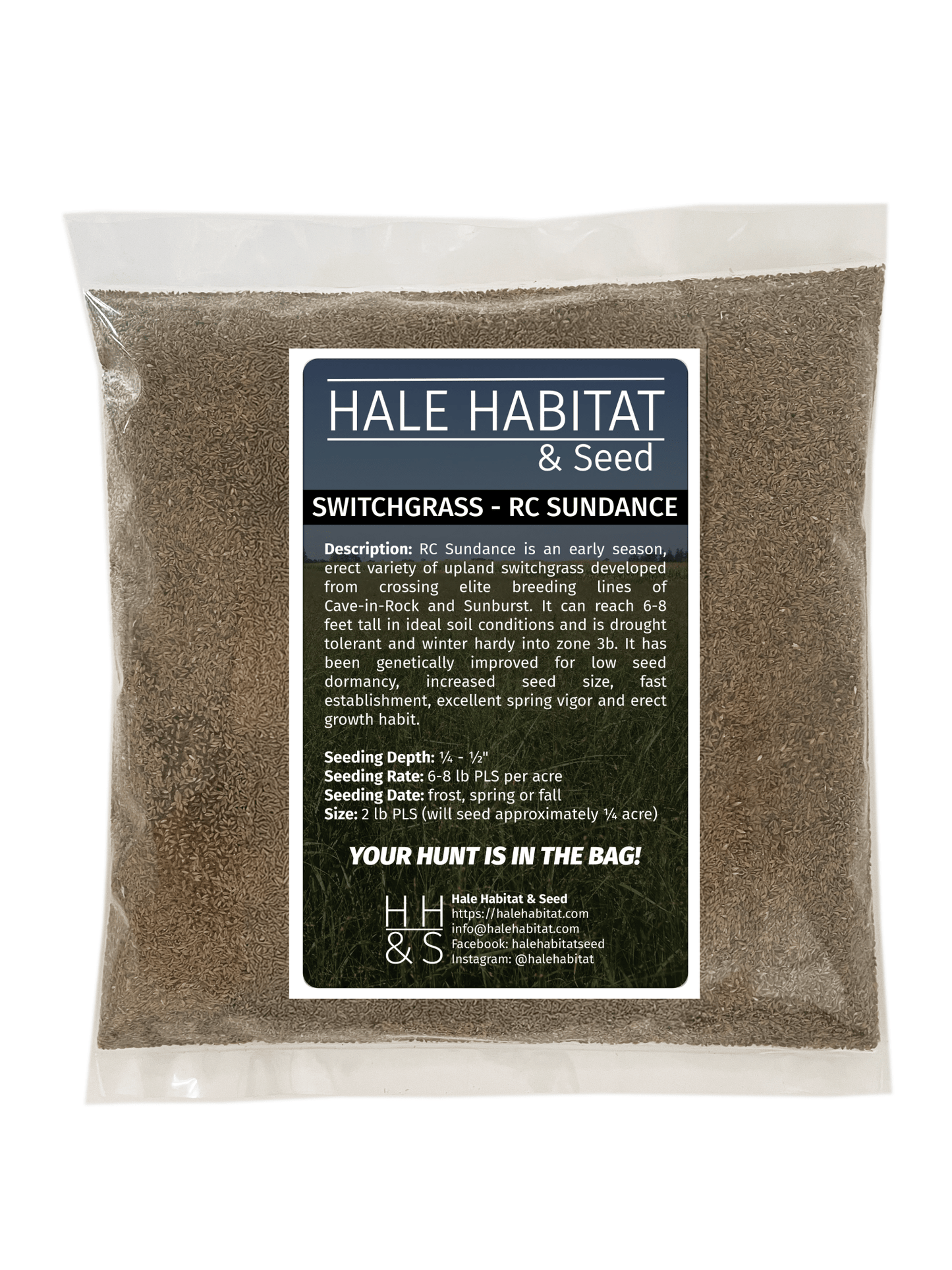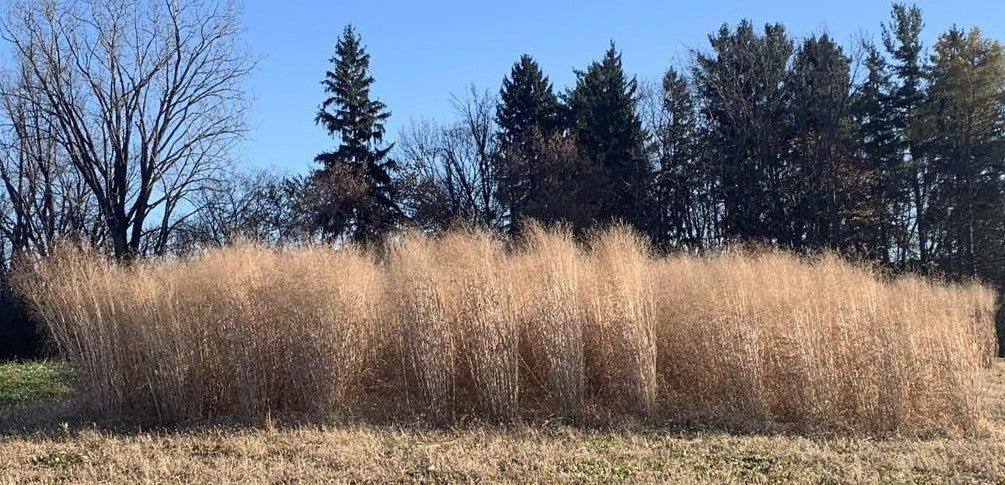Hale Habitat & Seed
Switchgrass (RC Sundance)
Switchgrass (RC Sundance)
FREE SHIPPING!
Couldn't load pickup availability
RC Sundance is a new early season, erect variety of upland switchgrass developed from crossing elite breeding lines of Cave-in-Rock and Sunburst
RC Sundance Benefits
- Tall height and excellent yield potential – can reach 6 1/2- 8′ tall depending on soil type and rainfall
- Wide adaptability across the Upper Corn Belt and at least up to winter hardiness zone 4A in the Northern Great Plains. Best suited for use in zones 3B-5A for habitat use and zones 4-6 for farm use where it will be cut and harvested.
- It is drought tolerant, suitable for the Northern Great Plains to about 18” annual precipitation areas (much better drought tolerance than Cave-in-Rock)
- Genetically improved for low seed dormancy, increased seed size, fast establishment, excellent spring vigor and erect growth habit
- Maturity approximately 10 days earlier than Cave-in-Rock but approximately 4” taller
- Very good winter hardiness and persistence, tested to be winter hardy to zone 4A but likely can go into 3B
- Grows well on diverse soil types throughout its area of adaptation including imperfectly drained soils and soil subject to seasonal flooding. It is also well suited to low fertility sandy soils in the Upper Midwest. It is large seeded and has excellent emergence when drill seeded.
- A multi-purpose grass variety suited for forage, biomass, soil conservation and wildlife habitat applications. In the Midwest it can be used in a mixture with RC Big Rock. In frost seedings it can be mixed with the small seeded RC Tecumseh.
- Provides tall, dense cover for nesting birds, small mammals, and fawns.
- Seeds are a food source for birds like quail, pheasants, and sparrows.
- Improves soil health and reduces erosion, benefiting overall ecosystem stability.
RC Sundance Switchgrass is a hardy, low-maintenance native grass that enhances wildlife habitat, supports conservation efforts, and is ideal for tall cover and screening.
Key Characteristics of RC Big Rock Switchgrass
-
Planting Time:
-
Late spring to early summer (May to June) when soil temperatures reach 60°F or higher.
-
-
Planting Depth:
-
¼ to ½ inch for optimal germination and establishment.
-
-
Planting Rates:
-
Broadcast: 8-10 lbs of pure live seed (PLS) per acre.
-
Drilling: 5-7 lbs of PLS per acre.
-
-
Days to Maturity:
-
Establishes in 1-2 years, reaching full maturity by the third growing season.
-
-
Height at Maturity:
-
5-7 feet tall, making it ideal for tall cover and screening.
-
-
Drought Tolerance:
-
High; deep root system allows it to thrive in dry conditions.
-
-
Saturated Soil Tolerance:
-
Moderate; can tolerate occasional flooding but not prolonged waterlogged conditions.
-
-
Shade Tolerance:
-
Low; prefers full sun for optimal growth.
-
Fertilization Guidelines
-
Nitrogen (N):
-
Apply 50-70 lbs per acre at planting, with additional applications of 30-50 lbs per acre in subsequent years if needed for biomass production.
-
-
Phosphorus (P) and Potassium (K):
-
Apply based on soil test recommendations. Typical rates range from 20-40 lbs per acre for P and K.
-
-
pH Range:
-
Prefers a soil pH of 5.5-7.5 for optimal growth.
-
Herbicide Use
-
Switchgrass is slow to establish and may require weed control during the first 1-2 years.
-
Pre-Emergent Herbicides:
-
Use atrazine or imazapic (labeled for switchgrass) to control annual grasses and broadleaf weeds during establishment.
-
-
Post-Emergent Herbicides:
-
2,4-D can be used for broadleaf weed control. Avoid herbicide use once switchgrass is established to protect wildlife habitat.
-
-
Caution: Follow label instructions and avoid herbicides that may harm non-target species.
Share




